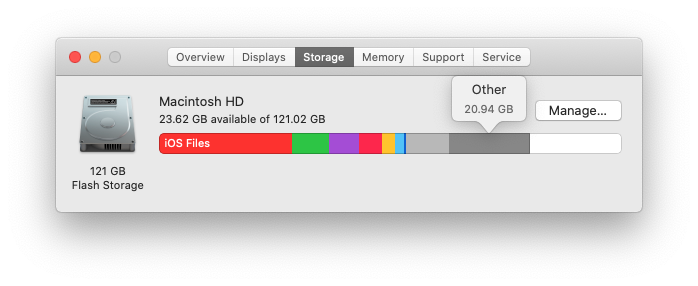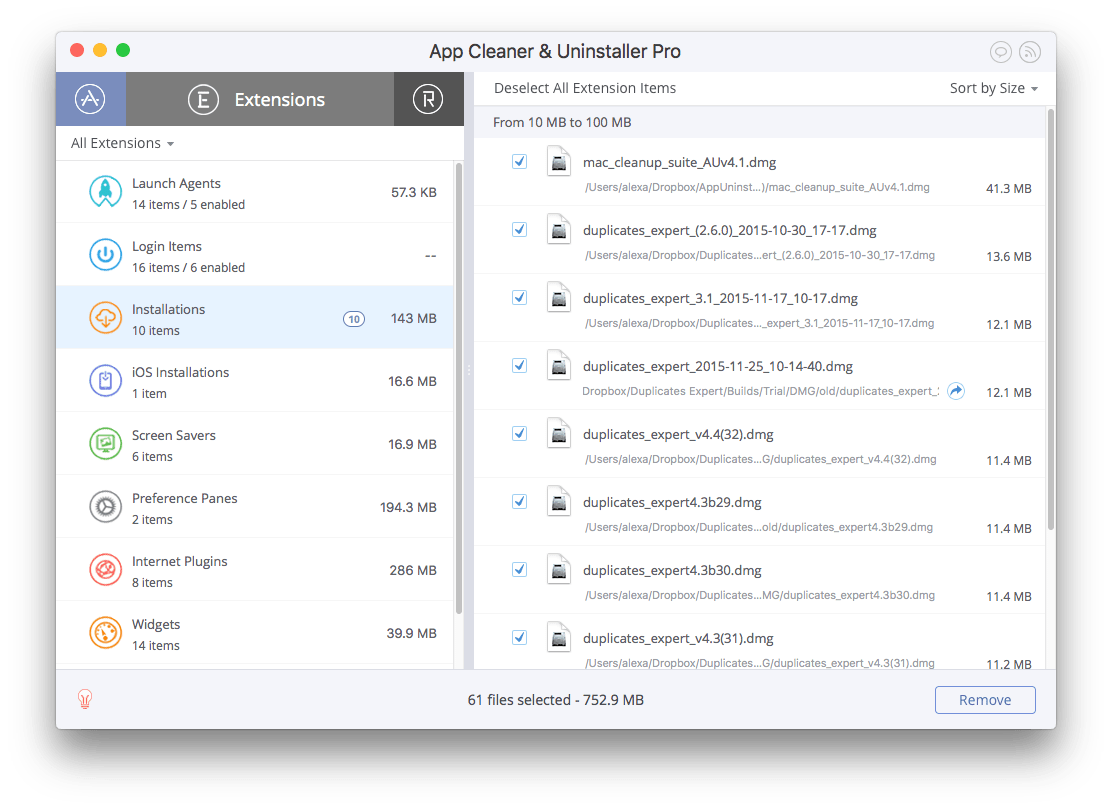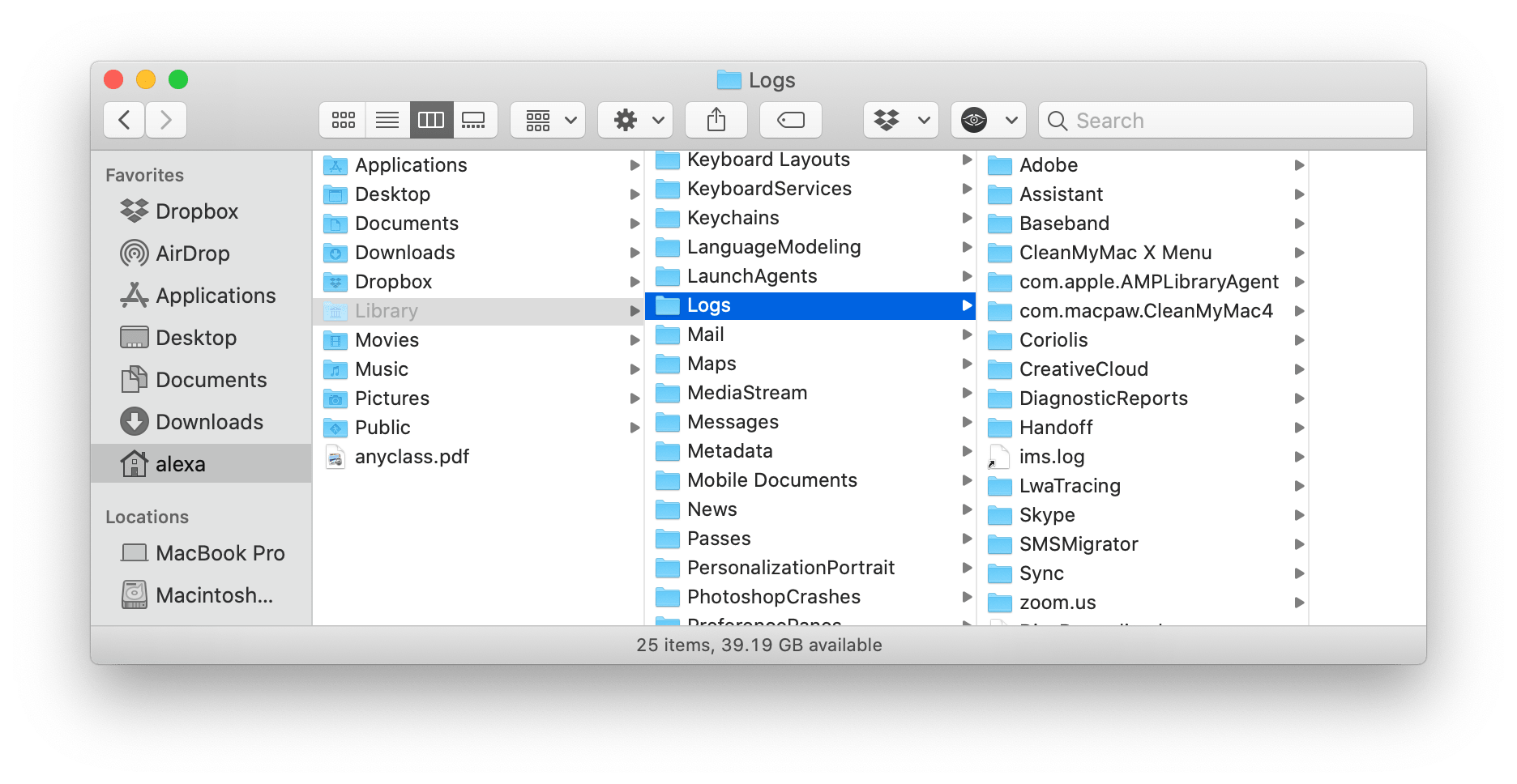- Mac Hidden Files Taking Up Space
- Hidden Files On Mac Taking Up Space
- Hidden Files In Download Folder Taking Up Space Macbook Pro Model
- Hidden Files Taking Up Space On Mac
How to See What Is Taking Up the Most Space on Your Mac. If you find your Mac is beginning to run low on hard drive space, Finder is the built-in default file manager that allows you to see which files are taking up the most space. Moving a few large files you seldom need to.
Optimized Storage helps you save storage space space by storing your content in iCloud and making it available on demand:
- When storage space is needed, files, photos, movies, email attachments, and other files that you seldom use are stored in iCloud automatically.
- Each file stays right where you last saved it, and downloads when you open it.
- Files that you’ve used recently remain on your Mac, along with optimized versions of your photos.
If you haven't yet upgraded to macOS Sierra or later, learn about other ways to free up storage space.
- Delete Large Files on your Mac. Instead of deleting a hundred small files and images, first of all, let.
- By default, all files downloaded from the Internet are stored in the Downloads folder. Most likely you will find installations.pkg files, and.dmg files in this folder. Explore the Downloads folder and remove all unnecessary files from there. Note that the two tips above can be done in a quicker and easier way if you use MacCleaner Pro.
- Just right-click the file and select Free up space. Only files that you mark as Always keep on this device have the green circle with the white check mark. These always available files download to your device and take up space, but they’re always there for you even when you’re offline.
Find out how much storage is available on your Mac

Choose Apple menu > About This Mac, then click Storage. Each segment of the bar is an estimate of the storage space used by a category of files. Move your pointer over each segment for more detail.
Click the Manage button to open the Storage Management window, pictured below.
Manage storage on your Mac
The Storage Management window offers recommendations for optimizing your storage. If some recommendations are already turned on, you will see fewer recommendations.
Store in iCloud
Click the Store in iCloud button, then choose from these options:
- Desktop and Documents. Store all files from these two locations in iCloud Drive. When storage space is needed, only the files you recently opened are kept on your Mac, so that you can easily work offline. Files stored only in iCloud show a download icon , which you can double-click to download the original file. Learn more about this feature.
- Photos. Store all original, full-resolution photos and videos in iCloud Photos. When storage space is needed, only space-saving (optimized) versions of photos are kept on your Mac. To download the original photo or video, just open it.
- Messages. Store all messages and attachments in iCloud. When storage space is needed, only the messages and attachments you recently opened are kept on your Mac. Learn more about Messages in iCloud.
Storing files in iCloud uses the storage space in your iCloud storage plan. If you reach or exceed your iCloud storage limit, you can either buy more iCloud storage or make more iCloud storage available. iCloud storage starts at 50GB for $0.99 (USD) a month, and you can purchase additional storage directly from your Apple device. Learn more about prices in your region.
Optimize Storage
Click the Optimize button to save space by automatically removing watched movies and TV shows. When storage space is needed, movies or TV shows that you purchased from Apple and already watched are removed from your Mac. Click the download icon next to a movie or TV show to download it again.
Your Mac will also save space by keeping only recent email attachments on this Mac when storage space is needed. You can manually download any attachments at any time by opening the email or attachment, or saving the attachment to your Mac.
Optimizing storage for movies, TV shows, and email attachments doesn't require iCloud storage space.
Empty Trash Automatically
Empty Trash Automatically permanently deletes files that have been in the Trash for more than 30 days.
Reduce Clutter
Reduce Clutter helps you identify large files and files you might no longer need. Click the Review Files button, then choose any of the file categories in the sidebar, such as Applications, Documents, Music Creation, or Trash.
You can delete the files in some categories directly from this window. Other categories show the total storage space used by the files in each app. You can then open the app and decide whether to delete files from within it.
Learn how to redownload apps, music, movies, TV shows, and books.
Where to find the settings for each feature
The button for each recommendation in the Storage Management window affects one or more settings in other apps. You can also control those settings directly within each app.

- If you're using macOS Catalina or later, choose Apple menu > System Preferences, click Apple ID, then select iCloud in the sidebar: Store in iCloud turns on the Optimize Mac Storage setting on the right. To turn off iCloud Drive entirely, deselect iCloud Drive.
- If you're using macOS Mojave or earlier, choose Apple menu > System Preferences, click iCloud, then click Options next to iCloud Drive. Store in iCloud turns on the Desktop & Documents Folders and Optimize Mac Storage settings.
- In Photos, choose Photos > Preferences, then click iCloud. Store in iCloud selects iCloud Photos and Optimize Mac Storage.
- In Messages, choose Messages > Preferences, then click iMessage. Store in iCloud selects Enable Messages in iCloud.
- If you're using macOS Catalina or later, open the Apple TV app, choose TV > Preferences from the menu bar, then click Files. Optimize Storage selects “Automatically delete watched movies and TV shows.”
- In you're using macOS Mojave or earlier, open iTunes, choose iTunes > Preferences from the menu bar, then click Advanced. Optimize Storage selects “Automatically delete watched movies and TV shows.”
- In Mail, choose Mail > Preferences from the menu bar, then click Accounts. In the Account Information section on the right, Optimize Storage sets the Download Attachments menu to either Recent or None.
Empty Trash Automatically: From the Finder, choose Finder > Preferences, then click Advanced. Empty Trash Automatically selects “Remove items from the Trash after 30 days.”
Other ways that macOS helps automatically save space
Mac Hidden Files Taking Up Space
With macOS Sierra or later, your Mac automatically takes these additional steps to save storage space:
- Detects duplicate downloads in Safari, keeping only the most recent version of the download
- Reminds you to delete used app installers
- Removes old fonts, languages, and dictionaries that aren't being used
- Clears caches, logs, and other unnecessary data when storage space is needed
How to free up storage space manually
Even without using the Optimized Storage features described in this article, you can take other steps to make more storage space available:


- Music, movies, and other media can use a lot of storage space. Learn how to delete music, movies, and TV shows from your device.
- Delete other files that you no longer need by moving them to the Trash, then emptying the Trash. The Downloads folder is good place to look for files that you might no longer need.
- Move files to an external storage device.
- Compress files.
- Delete unneeded email: In the Mail app, choose Mailbox > Erase Junk Mail. If you no longer need the email in your Trash mailbox, choose Mailbox > Erase Deleted Items.
Learn more
- The Storage pane of About This Mac is the best way to determine the amount of storage space available on your Mac. Disk Utility and other apps might show storage categories such as Not Mounted, VM, Recovery, Other Volumes, Free, or Purgeable. Don't rely on these categories to understand how to free up storage space or how much storage space is available for your data.
- When you duplicate a file on an APFS-formatted volume, that file doesn't use additional storage space on the volume. Deleting a duplicate file frees up only the space required by any data you might have added to the duplicate. If you no longer need any copies of the file, you can recover all of the storage space by deleting both the duplicate and the original file.
- If you're using a pro app and Optimize Mac Storage, learn how to make sure that your projects are always on your Mac and able to access their files.
What is the bin folder?
Although it might sound like it, this is not the Trash. Bin is another hidden folder.
When operating systems, such as macOS — and Mac OS X before that — are constructed using a Linux system directory, certain files and folders are hidden on purpose. Almost every operating system will hide things that the majority of users don't need. It is the same as an architect and builder placing plumbing and wiring behind a wall: it looks better, and the last thing you want is to accidentally damage the operating system that keeps your house functioning smoothly.
It is enough for most people to know that the plumbing and wiring are working smoothly and that they can call a professional should something go wrong. With an Apple operating system, hidden folders and files are routes that power users take to tweak and modify a Mac, to improve how it performs, and solve any problems should anything go wrong.
Accessing the bin folder is another way to take a look at potentially make changes to license and configuration files. Now, if you ever want to make changes to hidden files and folders without digging around in system directories, there is an easier and quicker way. Download an app like CleanMyMac X to uncover space within hard drives. Using its Space Lens feature, This program can show you what is taking up space and help you delete anything you don't need.
However, if you are keen to look under the hood manually, here is how to access the bin folder.
Hidden Files On Mac Taking Up Space
Ways to access the bin folder?
Method 1: Find the bin folder through the Finder
- Open Finder
- Press Command+Shift+G to open the dialogue box
- Input the following search:
/usr/local/bin - Now you should have temporary access, so you should be able to drag it into the Finder favorites if you want to access it again.
Another way to find the bin folder is through Terminal.
Method 2: Finding the bin in Terminal
- Launch Terminal; which you can find in /Applications/Utilities
- Enter this command in Terminal:
chflags nohidden ~/usr/local/bin - Click Return. Make sure the command is executed.
- Quit Terminal. The bin folder should be visible in the Finder.
- If you ever want to restore this to how it was before, enter the following command in Terminal:
chflags hidden ~/usr/local/bin - Click Return again, and it should be back to how it was.
Only attempt this method if you are comfortable using the Terminal. Remember, using Terminal can make significant changes to your macOS systems and files, so only make these sorts of changes if you’re confident in the inputting instructions. This way, you should have temporary access to the bin folder to make any needed changes.
Hidden Files In Download Folder Taking Up Space Macbook Pro Model
Pro Tip: If you find yourself running short of storage on your Mac, clear out your downloads folder. Everything you’ve ever downloaded that you’ve not moved somewhere else or copied is sitting in that folder. Going right back to when you got your Mac. Imagine how much room that is taking up! Especially when it contains zip folders, videos, images, and app downloads.
Another way to access hidden directories
There are many apps that allow you to gain access to hidden files, folders, and directories. One such is Daisy Disk, another CleanMyMac X. I prefer CleanMyMac better because of nice visualizations. You can click the 'Space Lens' tool and see the entire folder tree of your Mac. This reveals many hidden folders and things you may have long forgotten.
I downloaded the free version of CleanMyMac X here.
After you get the app, you need to click the 'Space Lens' tab.
Hidden Files Taking Up Space On Mac
From there, click on bubbles to dive deeper into folders that are sorted by colors and categories. Quite exciting, really.
That's all you need to know about finding the Bin folder on Mac. Stay tuned for more Mac tips!
